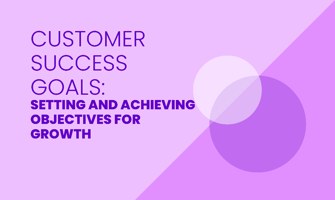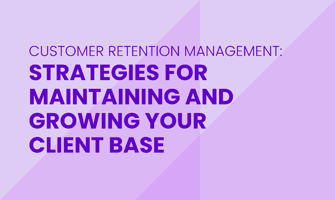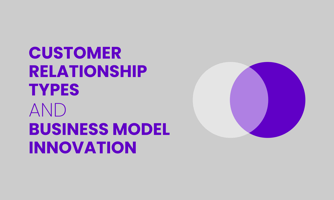Setting clear Customer Success goals helps companies grow. Align these goals with business...
What is Customer Success? Understanding the Basics and Importance
Customer success helps customers succeed with products or services they buy. It’s different from customer support, which mainly solves problems.
Customer success makes sure customers get the most value. This leads to higher satisfaction, loyalty, and repeat business.
Businesses that focus on customer success see better growth and lower costs. A good customer success team helps customers achieve their goals.
They also keep track of how customers use the products to make things better.
Understanding What is Customer Success
Customer success in business means helping people reach their goals with the products or services they buy.
A customer success manager works proactively with teams to ensure clients get the best value. This leads to more revenue and keeps customers coming back.
Customer success is different from customer support. Customer support reacts to immediate problems, while customer success focuses on long-term success.
A good customer success plan includes:
Working closely with consumers.
Providing great onboarding experiences.
Creating upsell and cross-sell opportunities.
Monitoring customer health to avoid losing customers and to keep them happy.
The customer success team uses metrics like renewal rates and feedback to improve relationships. This helps the company meet customer needs.
This proactive approach creates loyal customers who promote the brand. This supports growth and reduces the chance of losing customers.
By focusing on customer experience and personalized solutions, businesses can:
Foster better interactions.
Sustain growth.
Improve customer retention and loyalty.
The Importance of Customer Success in Modern Business
Customer success is essential for business growth. It helps customers reach their goals, which builds long-term relationships and loyalty.
A strong customer success plan keeps customers happy and lowers churn rates. Teams work with customers from the start, offering early support and solutions. This is different from customer support, which responds to issues after they happen.
Focusing on customer success improves retention, renewals, and upsell opportunities.
Customer success teams gather feedback to make products and services better. They share insights with internal teams for ongoing improvement.
Customer success managers create personalized experiences for clients. This ensures clients get the most value from their purchases. A proactive approach creates advocates for the business, supporting growth.
Effective customer success strategies involve all departments, from sales and marketing to support. This unified approach identifies problems and creates custom solutions. It leads to better customer loyalty and lower churn.
A structured customer success team consistently meets customers' needs, driving growth and opportunities.
Key Components of a Customer Success Strategy
An effective customer success strategy involves several important elements. These ensure a business's success and client satisfaction.
Key components include:
A dedicated customer success team that understands customers’ goals.
Tailored solutions through attentive interaction and support.
Data analytics and customer feedback are also important. They help track metrics like churn rates, customer health, and retention rates. This tracking helps teams find problem areas and growth opportunities. This information helps the customer success manager create strategies that match customer experience, promoting long-term success and loyalty.
A proactive account management approach is necessary. It involves:
Continuous engagement.
An effective onboarding process.
Regular check-ins to ensure customers get the most value from products and services.
By addressing issues early, businesses can reduce churn and increase customer retention. Personalized experiences, cross-sell and upsell opportunities, and a focus on customer happiness can turn customers into promoters and advocates. This drives revenue and builds long-term relationships.
With the combined efforts of customer support, marketing, and sales teams, businesses can create a positive customer experience. This ensures ongoing renewal and satisfaction, leading to business growth and successful customer management.
Best Practices for Implementing Customer Success
Customer Onboarding
Customer onboarding has several steps that set up customer success.
First, there is a detailed introduction to the products or services. This ensures the client knows the value they will receive.
The onboarding process allows the customer success team to answer any questions. This enhances the customer experience.
A smooth onboarding process can improve retention rates. It makes customers feel supported and informed from the start, reducing the chance they will leave.
Customer education during this phase is very important. It ensures users know how to maximize their product usage and reach their goals.
This customer success strategy helps in building strong relationships. It promotes ongoing success, advocacy, and customer loyalty.
By engaging in continuous customer interaction, customer success managers can offer tailored solutions and support. This leads to higher customer satisfaction and revenue growth.
The onboarding process, supported by regular feedback and customer care, turns customers into promoters and advocates for the business.
Effective onboarding helps create a seamless lifecycle from initial signup to renewal. It drives sales and opens opportunities for cross-selling and upselling.
Proactive Account Management
Proactive account management helps build long-term customer relationships. It aligns the goals of the business with those of the customer.
The customer success team supports customers in reaching their goals. They do this through better onboarding, providing solutions that maximize product value, and offering support when needed.
Tools like CRM systems help track interactions. Customer success software helps monitor customer health metrics, renewal rates, and churn rates.
Key performance indicators to track include:
Customer retention
Churn rates
Customer happiness
Feedback
Focusing on these metrics helps customer success managers identify upsell and cross-sell opportunities. This ensures clients get the most value from products and services.
This proactive approach helps create customer promoters. These promoters advocate for the business, contributing to growth and loyalty.
Proactive account management ensures a positive customer experience. This is important for retention and reducing churn, making it integral to any customer success strategy.
Customer success teams focus on creating experiences that drive loyalty and business growth. They also optimize the overall consumer lifecycle from onboarding to ongoing success.
Customer Feedback
Customers value products and services that meet their goals and needs.
Customer success teams identify these important features.
However, customers may face challenges like a complicated onboarding process or a lack of proactive support.
Feedback often shows the need for:
Improved solutions
Better account management
Personalized client interactions
These improvements can enhance customer experiences and retention.
Satisfied customers who find great value are likely to become advocates. They recommend the products because they enjoy the proactive support and positive relationships.
Ensuring customer happiness reduces churn rates. It also leads to more revenue through upselling and cross-selling, boosting business growth and customer loyalty over time.
How to Structure a Customer Success Team
A well-structured Customer Success Team has several roles and responsibilities.
The team should include customer success managers. These managers guide clients through onboarding. They ensure clients achieve their goals using the products and services. They also provide ongoing support and advocate for customer needs within the organization.
The team should use proactive customer success strategies. This helps identify opportunities like cross-sell and upsell chances. It also improves customer loyalty and retention.
Effective reporting structures involve clear communication between customer success managers and other teams. These include sales, marketing, and product development. This fosters a collaborative approach.
Key metrics to measure customer success include:
Tracking customer health
Renewal rates
Customer retention
Churn rates
Customer success teams should use feedback loops to refine strategies. This is based on customer interactions and experiences. It ensures continued growth and customer happiness.
By focusing on these elements, businesses can build strong customer relationships. This leads to higher satisfaction, reduced churn, and increased revenue.
An effective customer success management strategy turns customers into loyal promoters. It also ensures long-term consumer success and business sustainability.
The Role of Email Templates in Customer Success
Email templates help with customer onboarding. They provide consistent and clear information to educate clients about products and services.
This process improves customer happiness and success. It leads to better retention and growth.
In proactive account management, email templates keep communication constant. Account managers can share updates, offer solutions, and provide value. This helps maintain strong customer relationships.
Templates can also be customized to ask for customer feedback. This helps the team gather insights into customer experiences and monitor customer health. Strategies can then be adjusted for better outcomes, such as reducing churn rates.
Using these templates aligns the customer success strategy with customer goals. This promotes customer satisfaction and loyalty. It also opens opportunities for upsell and cross-sell.
Email templates create a structured yet flexible way to interact with customers. They significantly boost customer retention and revenue with efficient support and communication.
Building a Feedback Loop
Building a feedback loop involves several steps:
Gather and analyze customer feedback and insights.
Implement tagging within help desks.
Use sentiment analysis to capture customer data.
Insights from customer feedback should help with product development. Regular updates and involvement from all teams are necessary.
Customer success teams must communicate with customers promptly. This shows customers that their input is valued.
Use personalized emails and public forums to highlight changes based on feedback. Customer success managers should push for continuous improvement. This will enhance customer experiences and promote renewal and retention.
Teams in customer support, marketing, and sales need to work closely. This ensures feedback leads to actionable solutions.
Proactive onboarding, engaging with promoters, and addressing churn rates are essential. These steps build long-term relationships and show customer-focused strategies.
This approach fosters loyalty, increases revenue, and supports growth.
Tips for Enhancing the Customer Experience
Personalization
A company customizes its services to match individual customer needs and preferences. This personalization helps customer success.
They use methods like:
Customer health metrics
Feedback loops
Sentiment analysis
These methods gather data for personalized interactions. Teams focus on understanding customer goals. They provide tailored experiences during onboarding and throughout the customer journey.
Customer success managers help by:
Advocating for customers
Aligning solutions with client goals
Enhancing relationships
Driving upsell and cross-sell opportunities
Personalization leads to better customer satisfaction and retention rates. It also:
Reduces churn
Boosts business growth
A good customer success strategy includes personalized support. This can turn customers into promoters and increase renewal rates. It also contributes significantly to revenue.
With dedicated customer success teams, organizations provide unique experiences. This improves overall customer happiness and loyalty. Real-time interactions and proactive engagement make customers feel valued. This leads to long-term relationships and better customer success management.
This approach enhances customer experiences. It also supports a thriving subscription-based business model.
Timely Customer Support
Timely customer support ensures customer satisfaction and retention. Quick response times greatly impact a customer’s experience.
Effective customer support strategies provide quick resolutions to support tickets. Companies have customer success managers and dedicated teams to track and speed up solutions.
The onboarding process sets clear customer goals and expectations. The support team works to meet these goals.
Measuring customer support involves tracking metrics like:
Response times
Churn rates
Customer health
Client feedback
Customer support teams aim to turn customers into advocates by providing value and boosting loyalty. They use proactive and reactive solutions.
Customer success management builds strong relationships. This leads to increased revenue, successful renewals, and cross-selling opportunities.
Organizations focusing on timely support see:
Better customer interactions
Growth
Lower churn rates
Higher customer happiness
A strong customer success strategy matches well with marketing and sales strategies. This promotes a smooth lifecycle experience for customers.
Designing a Customer Success Program
A Customer Success Program should aim to achieve several goals.
First, it should improve customer satisfaction and loyalty by providing proactive support tailored to each client's needs.
A dedicated customer success team can help customers during the onboarding process to ensure they get maximum value from the products and services.
By focusing on customer experiences, the program can improve retention rates and reduce churn by fixing issues early.
Account managers and customer success managers should work together on strategies for cross-selling and upselling, which leads to increased revenue.
To meet the specific needs of different customer segments, the program should include personalized customer success strategies that consider various stages of the customer lifecycle.
Success can be measured using metrics like:
Customer health scores
Churn rates
Renewal rates
Customer retention
Customer feedback
By building strong relationships and promoting customer happiness, the organization can turn satisfied customers into advocates and promoters. This drives business growth and customer loyalty.
Finally, regular feedback loops and communication can ensure continuous improvement and alignment with customer goals. This makes the entire process more effective and efficient.
Promoting Customer Loyalty through Success Initiatives
Tailored customer success initiatives help improve customer loyalty and retention.
Personalized experiences should match the consumer’s goals.
For example:
A customer success team listens to client needs.
They help clients get the most value from products and services.
Specific strategies are:
Proactive onboarding, where a manager guides new users.
Regular check-ins and feedback loops to monitor customer health and address issues quickly.
Other important parts are:
Cross-sell and upsell opportunities that benefit the client.
Using success metrics like renewal rates and customer lifetime value.
These metrics show how well customer success efforts work.
By measuring these, an organization sees how it promotes loyalty and customer happiness.
Companies focusing on these usually see growth in retention and loyalty.
This can turn customers into promoters for the business.
Effective coordination between customer success management, marketing, sales, and support ensures a seamless customer experience.
This fosters durable and meaningful relationships.
FAQ
What is customer success?
Customer success is a strategy where businesses focus on ensuring their customers achieve their desired outcomes by providing guidance, support, and resources. For example, a software company may offer regular check-ins, training sessions, and access to a dedicated customer support team to help clients maximize the value of their product.
Why is customer success important for businesses?
Customer success is crucial for businesses because satisfied customers are more likely to be repeat buyers, refer others, and provide valuable feedback for improvement. By ensuring customer success, businesses can increase retention rates and drive growth.
What are the key components of customer success?
The key components of customer success include proactive communication, understanding needs, offering support, and driving value. Examples include checking in regularly, providing personalized solutions, assisting with onboarding, and sharing best practices for utilizing the product or service effectively.
How does customer success differ from customer service?
Customer success focuses on proactive, strategic efforts to help customers achieve their goals using the product/service. Customer service, on the other hand, involves reactive responses to address issues or inquiries.
For example, customer success may involve personalized guidance for a new customer, while customer service may handle a technical support request.
How can businesses measure the success of their customer success strategies?
Businesses can measure the success of their customer success strategies by tracking metrics such as customer retention rates, customer satisfaction scores, and Net Promoter Score (NPS). They can also analyze customer feedback and conduct surveys to gather insights on customer experiences.





